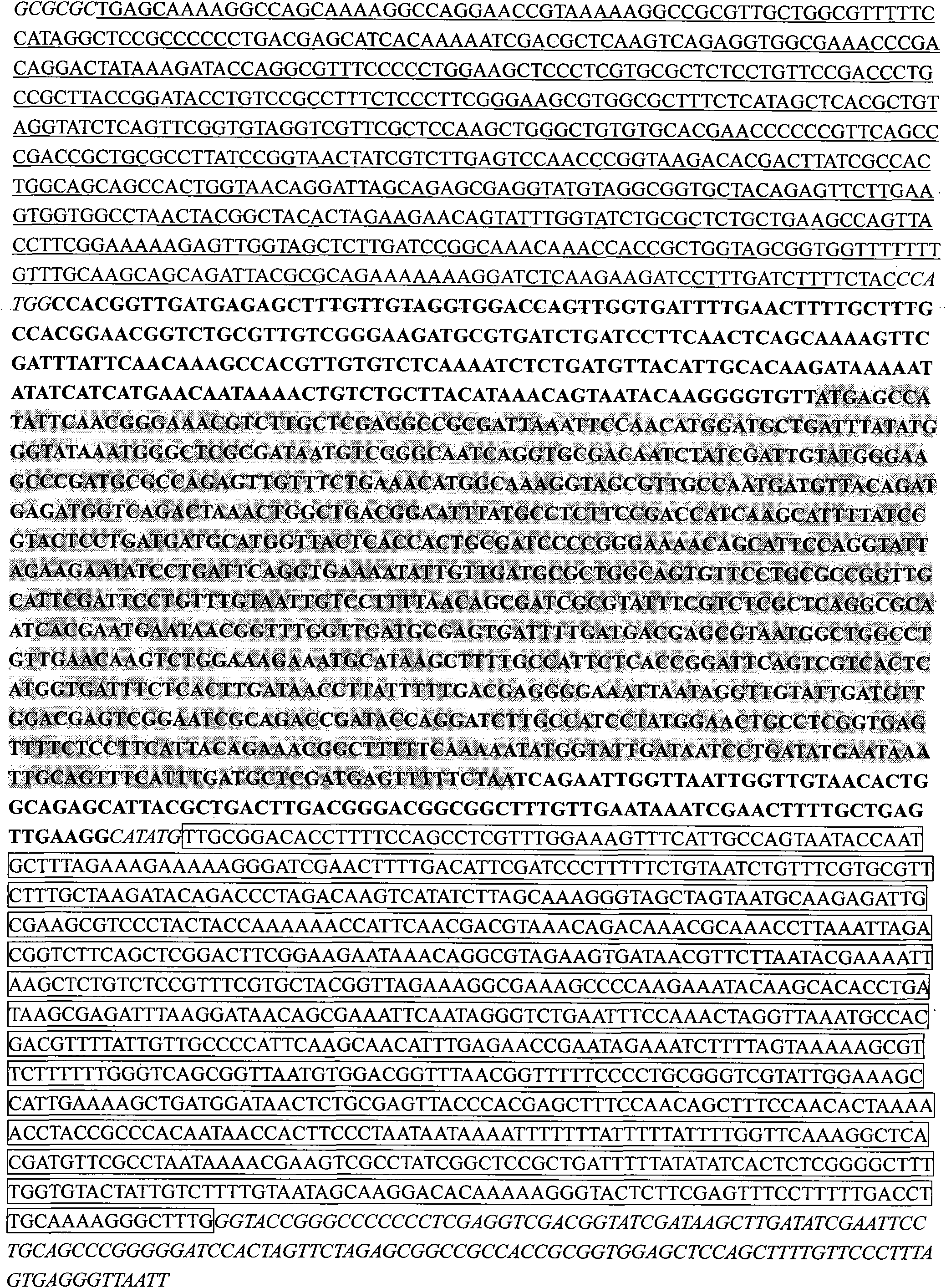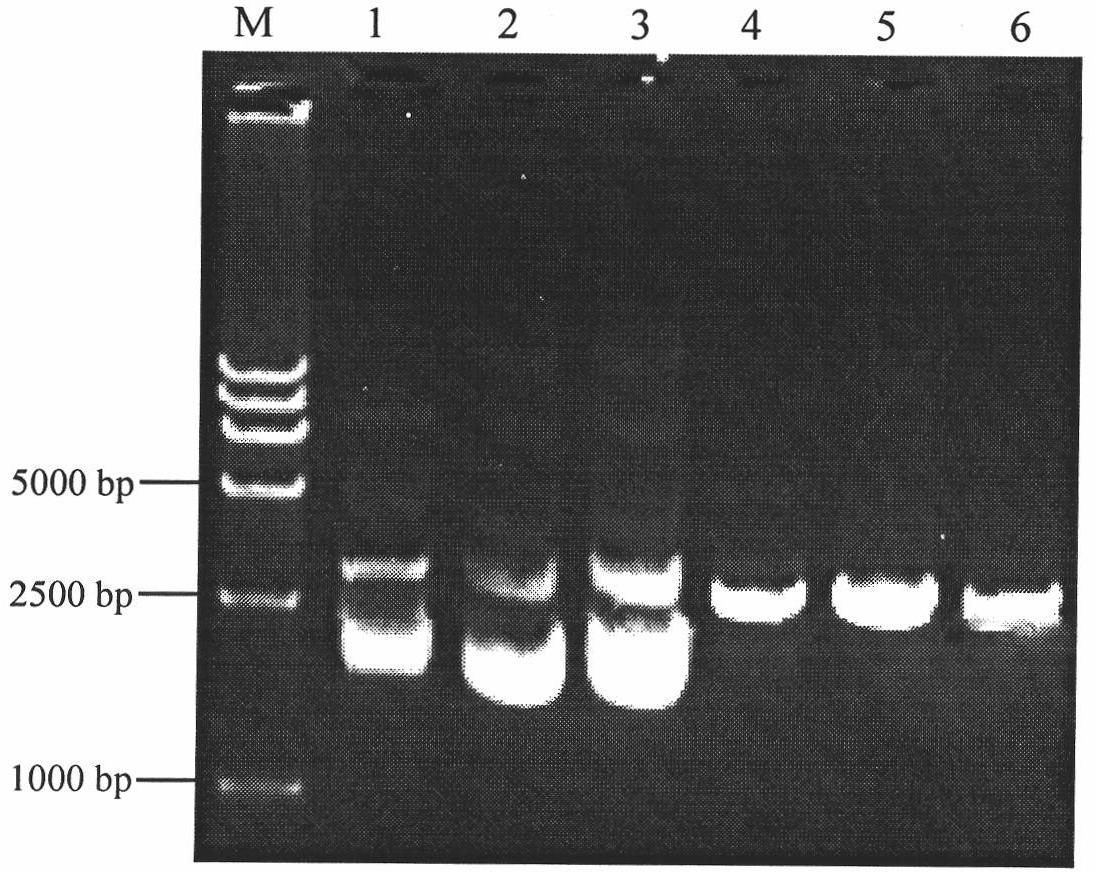Shuttle vector pSHK4 for escherichia coli and haemophilus parasuis, preparation method and application
A technology of Haemophilus suis and Escherichia coli, applied in the direction of using vectors to introduce foreign genetic material, recombinant DNA technology, etc., can solve the problem that resistance selection markers cannot play a role
- Summary
- Abstract
- Description
- Claims
- Application Information
AI Technical Summary
Problems solved by technology
Method used
Image
Examples
Embodiment 1
[0037] Example 1 Isolation, identification and bacteriological characteristics of Haemophilus parasuis isolate YC0093
[0038] 1. The bacteriological characteristics of Haemophilus parasuis isolate YC0093
[0039] Haemophilus parasuis isolate YC0093 forms round, smooth and moist, colorless and transparent colonies with a diameter of 1-2mm after cultured on TSA solid medium at 37°C for 24-48 hours. Observation under the microscope after Gram staining of above-mentioned colony smear, the bacterium is Gram-negative small bacillus, has pleomorphism from single coccus to long, slender, even filamentous thalline.
[0040] Haemophilus parasuis YC0093 cross-streaked with Staphylococcus aureus on the sheep blood agar plate, and cultured at 37°C for 24-48 hours, showing a typical "satellite growth phenomenon", that is, the closer the colony to the Staphylococcus grows, the better it is. Staphylococci do not grow far away, and hemolysis does not occur around H. parasuis colonies on bloo...
Embodiment 2
[0046] Example 2 Preparation of the shuttle carrier of the present invention
[0047] 1. PCR amplification of each element of the shuttle vector
[0048] Using the DNA of the commercial vector pBluescript II SK (+) (purchased from Strategene, USA) as a template, PCR amplification with primers Kpn (5'-CGACTCACTATAGGGCGAATTGGG) and OLF (5'-TTTTGCTCAGCGCGCAATTAACCCTCACTA) yielded a 176bp product, which contained The DNA fragment of the multiple cloning site (MCS); using the same template, a 699bp DNA fragment (UC ori) was amplified with primers OLR (5'-GGGTTAATTGCGCGCTGAGCAAAAGGC) and UCR (5'-TCAACCGTGGCCATGGGTAGAAAAAGATCAAAGGATCTTCTTG). Using the plasmid pLOF / TAG (a gift from Paul R. Langford, providing a registration form for disclosure of genetic resources sources) as a template, primers KF5'-CTTTTCTACCCATGGCCACGGTTGATGAGAGCTTTG) and KR (5'-TGTCCGCAACATATGCCTTCAACTCAGCAAAAGTTCGATT) were used to amplify the product (kan) with a length of 1191 bp. Using the wild plasmid pYC93 (...
Embodiment 3
[0076] Example 3: Verification of the shuttle function of the shuttle vector pSHK4
[0077] 1. Verify the replication of pSHK4 in E. coli:
[0078] The purpose of the present invention is to obtain a shuttle vector capable of replicating and expressing resistance markers in common cloning Escherichia coli engineering strains and Haemophilus parasuis. In the process of constructing the shuttle vector, it has been verified that the shuttle vector can replicate in Escherichia coli strain DH5α and make the host bacteria acquire kanamycin resistance. Using the calcium ion-mediated transformation method (Sambrook J., Russell DW., 2001. Molecular Cloning: A Laboratory Manual, third ed. Cold Spring Harbor Press, New York.), the shuttle vector pSHK4 obtained in the present invention was introduced into two other strains Escherichia coli strains HB101 (purchased from Invitrogen, USA) and Top10 (purchased from Invitrogen, USA) can also efficiently and stably obtain kanamycin-resistant p...
PUM
 Login to View More
Login to View More Abstract
Description
Claims
Application Information
 Login to View More
Login to View More - R&D
- Intellectual Property
- Life Sciences
- Materials
- Tech Scout
- Unparalleled Data Quality
- Higher Quality Content
- 60% Fewer Hallucinations
Browse by: Latest US Patents, China's latest patents, Technical Efficacy Thesaurus, Application Domain, Technology Topic, Popular Technical Reports.
© 2025 PatSnap. All rights reserved.Legal|Privacy policy|Modern Slavery Act Transparency Statement|Sitemap|About US| Contact US: help@patsnap.com



